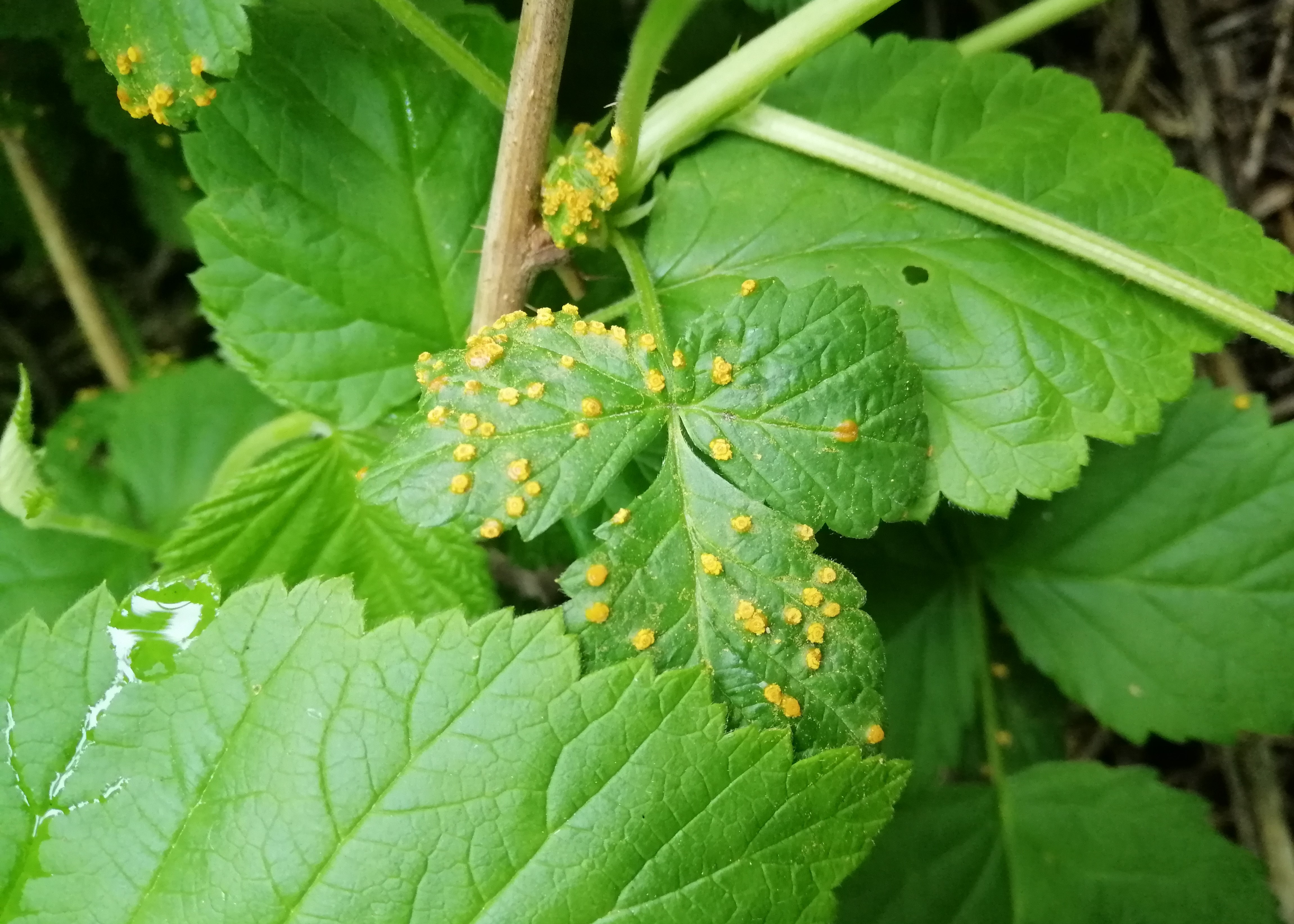
Yellow Rust
Pucciniastrum Americanum
Pathogen:
Fungus
Type:
Risk:
HIGH





DESCRIPTION
Pathogen description
Pucciniastrum americanum is a pathogenic fungus responsible for rust in raspberries. This fungus has a complex cycle involving two different hosts: raspberry plants and conifers such as Douglas fir. The spores of the fungus, known as urediniospores, disperse in the air and land on raspberry leaves, where they germinate and penetrate through the stomata. During infection, the fungus produces specialized structures called uredinia on raspberry leaves, where more spores are generated that can spread to other plants. In late summer and fall, the fungus forms teliospores on infected leaves, which then fall to the ground and can infect Douglas fir needles, completing the cycle. This process allows the fungus to survive and spread in different seasons and environmental conditions.
Disease description
Infection of Pucciniastrum americanum in raspberries results in the disease known as rust, which mainly affects the leaves, but can spread to other parts of the plant. Symptoms include the appearance of yellow Taches on the leaves, which eventually develop orange or brown pustules on the underside. These pustules contain the spores of the fungus that are released into the environment, facilitating the spread of the disease. Rust can weaken raspberry plants, reducing photosynthesis and, therefore, the productivity and quality of the fruits.
- Yellow Taches on the leaves.
- Orange or brown pustules on the underside of the leaves.
- Premature fall of leaves.
- Reduction in plant growth and vigor.
- Decrease in the production and quality of the fruits.
- General weakening of the plant.

TEMPERATURE AND HUMIDITY
15°C - 25°C
80% - 90%

VOIES DE TRANSMISSION
Wind, direct contact between plants, contaminated growing tools, workers' clothing and hands, infected planting material

Chemical treatments
CONTROL
• ORANGE OIL 60g/L [ME] P/S
• AZOXISTROBIN 25% [SC] P/V
• DIFENOCONAZOLE 25% [EC] P/V
• PIRACLOSTROBIN 6.7% + BOSCALIDE 26.7% ( ) [WG] P/P
• EUGENOL 3.3% + GERANIOL 6.6% + THYMOL 6.6% [CS] P/V
Treatments authorized in organic farming
• ORANGE OIL 60g/L [ME] P/S
• EUGENOL 3.3% + GERANIOL 6.6% + THYMOL 6.6% [CS] P/V
Biological control
-
Preventive treatments
• AZOXISTROBIN 25% [SC] P/V
• DIFENOCONAZOLE 25% [EC] P/V
• PIRACLOSTROBIN 6.7% + BOSCALIDE 26.7% ( ) [WG] P/P
• EUGENOL 3.3% + GERANIOL 6.6% + THYMOL 6.6% [CS] P/V
- Regularly monitor plants for early rust symptoms.
- Use rust-resistant raspberry varieties.
- Implement good ventilation management in the crop to reduce humidity.
- Remove and destroy infected leaves and plants to reduce the source of inoculum.
- Apply preventive and curative fungicides according to technical recommendations.
- Maintain adequate distance between plants to improve air circulation.
- Rotate crops and avoid planting nearby alternative hosts such as Douglas fir.
- Implement sanitation practices, including disinfection of farming tools and equipment.
- Use ground covers to avoid splashing of spores from the ground to the leaves.
- Train staff in the identification and management of the disease for a rapid and effective response.
Recommendations
*The recommended treatments are recommendations based on the authorities' databases and do not replace in any way the guidelines established by the legislation of each country.





